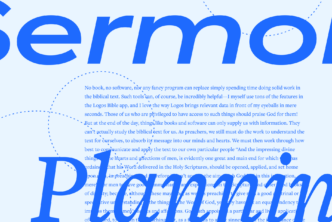In this post, I’ll be exploring one of the ways Logos can play a vital role in our spiritual formation.
One of the primary aspects of how we change is establishing new habits, new ways of doing things, and new ways of engaging with the world around us.
Many of us have good habits, but how often do we ask if the habit could be improved? Just because our habits are good doesn’t mean that they are bearing fruit in our lives. Our good habits can actually sabotage our transformation if we do them thoughtlessly. This is, to my mind, one of the primary motivations behind the ancient practice of Lectio Divina.
Lectio Divina, or Divine Reading, offers us a new way (or, in truth, a very old way) of reading the Scriptures, a way that seeks to be open and honest about the truth of our hearts and of our experience of the Holy Spirit. It is a slow, meditative, conversational engagement with the Scriptures in which we expect to hear from God as we read.
Ultimately, this ancient practice is intended to promote communion with God through a deep and transformative engagement with the Scriptures. It’s beautiful, and I am incredibly thankful that Logos has a Lectio Divina workflow built in.
But there are many different ways of practicing this ancient technique, and I wanted a workflow that fits what I’m accustomed to.
So I made my own workflow.
The Logos workflow editor allowed me to quickly build my own Lectio Divina workflow based on the materials Dr. John H. Coe has shared with all of the students at the Institute for Spiritual Formation. The flow I created combines some of the standard steps with prayers of intention, which are intended to open my heart to what the Spirit might want to say.
By taking the time to consider the state of my soul and to ask for the Lord’s insight into where I am and what I have experienced, I am ready to encounter the Scriptures afresh.
By entering slowly into my time in the Scriptures and moving peacefully through it, I find that I am more receptive and willing to listen than I am when I just dive right in. I find that the Scriptures speak more pointedly and suggestively because I have taken the time to prepare my heart before I begin. I am ready to meet with and hear from the God who inspired the words before me.
And that is where transformation happens: in the presence of God.
For more information on building custom workflows, see the User Education Team’s article that walks you through the process.






